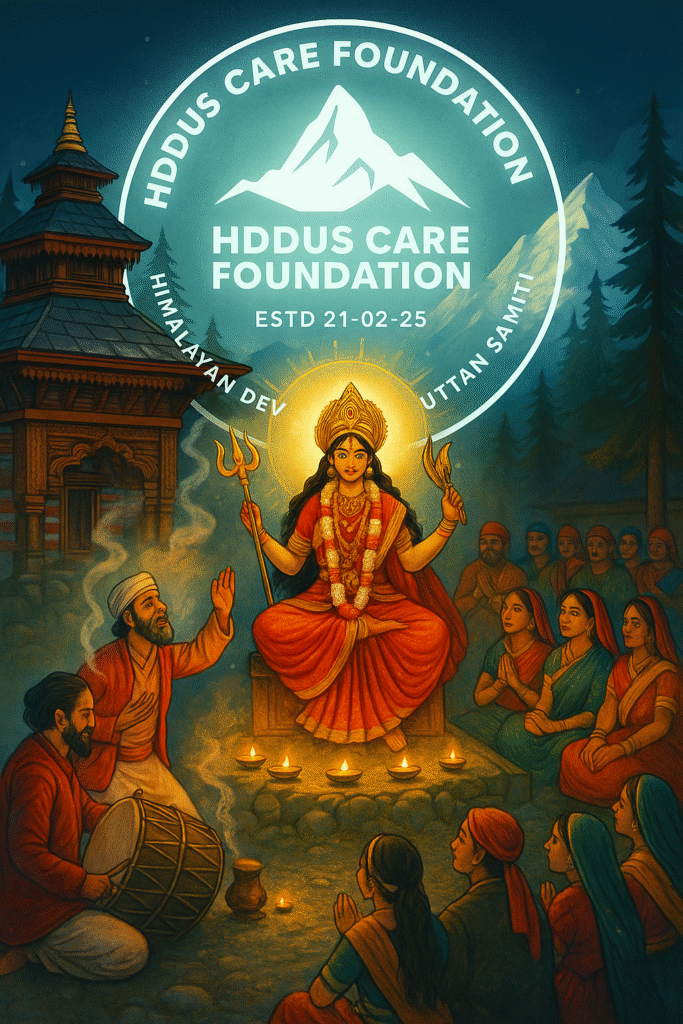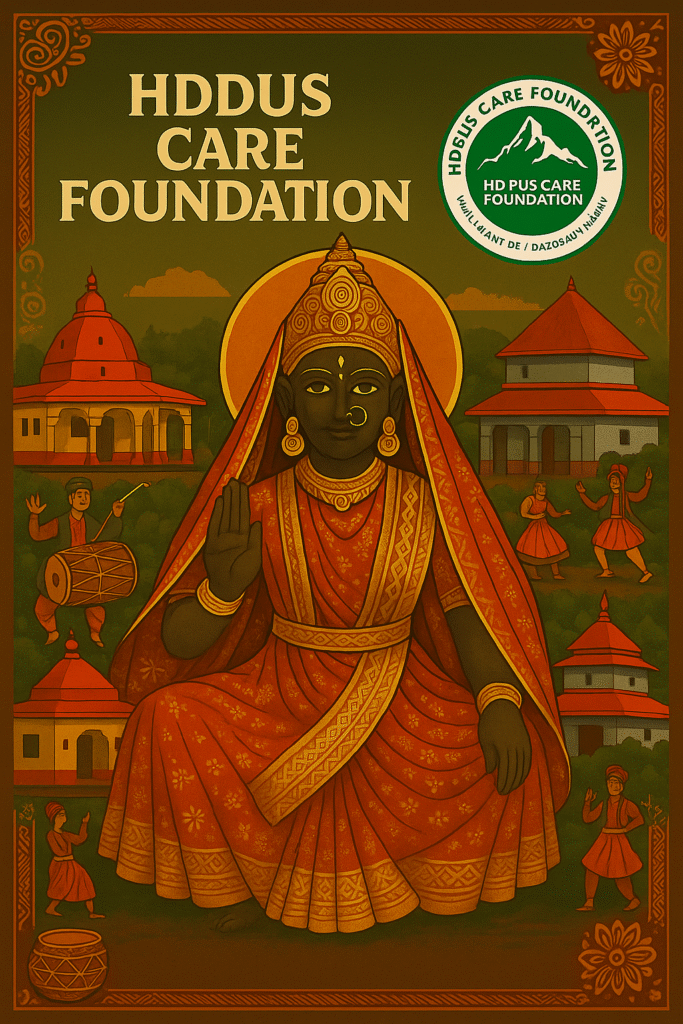Uttarakhand, known as the ‘Devbhoomi’ (Land of the Gods), is renowned for its natural beauty and spiritual heritage. Located in the Gangolihat region of Pithoragarh district, Maa Hat kalika Temple is one of the prominent Shakti Peethas (divine energy centers) of Northern India. Dedicated to Goddess Kali, this temple holds immense religious, historical, and cultural significance and is considered a symbol of the rich cultural heritage of the Kumaon region. It is believed that this Shakti Peeth was established by Adi Guru Shankaracharya and is thousands of years old.
Temple’s History and Mythological Significance
References to the Hatkalika Temple are found in Hindu scriptures, especially in the Manas Khand of the Skanda Purana. It is believed that Goddess Kali moved her abode from West Bengal to Gangolihat. The temple was established by Adi Shankaracharya during his tantric practices to calm the fierce form of the goddess. According to legends, during those times, people would hear Goddess Kali calling out Lord Shiva’s name at night, and those who heard it would meet with death. Through his intense spiritual practices, Shankaracharya pacified the Goddess and revived this sacred site.
In modern times, Saint Jangam Baba performed long penance and worship at the site. One night, Goddess Kali appeared in his dream and commanded him to build the temple. The present-day structure of the temple is the result of his devotion. A sacred eternal fire (Homa) continues to burn in the temple, representing the divine energy of the Goddess since ancient times.
Original Site: Boongli Village
The original site of Hatkalika Temple is located about 8 kilometers from Gangolihat, in Boongli village. This location is believed to be the ancient abode of the Goddess, where her earliest worship took place. A small idol of Goddess Kali is installed here, which is specially revered by the local community and devotees. Surrounded by a tranquil rural environment, devotees reach the site either on foot or by small vehicles. The original site in Boongli reflects the spiritual and historical roots of the temple and provides a peaceful experience for the visitors. Many believe that wishes made here are especially fulfilled.

Miracles of Maa Hatkalika
Stories of Maa Hatkalika’s miracles are well-known among locals and devotees. Some major ones include:
Protection of Soldiers: The soldiers of the Kumaon Regiment believe that the Goddess has protected them during battles. Especially during the 1971 Indo-Pak war, soldiers reported miraculous victories in impossible situations with the blessings of the Goddess. Many claimed to have felt her divine presence during combat.
Healing of Diseases: Locals believe that offering prayers and draping a chunari (sacred cloth) at the temple can cure severe illnesses. One devotee recounted healing from a long-standing illness after praying at Boongli and having darshan (sight) of the Goddess.
Fulfillment of Wishes: The tradition of tying chunaris is popular at both Boongli and the Hatkalika Temple. Devotees say their heartfelt wishes — whether related to jobs, marriage, or children — have been fulfilled.
Spiritual Experiences: Several practitioners have reported feeling the divine energy of Maa Kali during meditation at the temple and its original site. Some have even claimed to hear the voice of the Goddess or see her in dreams.
Natural Miracles: A sacred spring called Janhvi Naula, flowing from an oak tree near the temple, never dries up. Locals believe this is a miracle of Maa Kali, symbolizing her constant divine presence.
Religious and Cultural Importance
Hatkalika Temple holds special importance not just in the Kumaon region, but also for the Kumaon Regiment of the Indian Army. Their war cry “Kalika Mata Ki Jai” signifies their deep faith in the Goddess. Before heading to war or important missions, soldiers often visit the temple to seek her blessings. Even Param Vir Chakra awardee Captain Vikram Batra was a devout follower of Goddess Kali.
Locals believe that the Goddess rests at the temple during the night. Devotees make wishes and follow the tradition of tying chunaris. Once their wishes are fulfilled, they offer bells in gratitude. Special rituals and prayers are conducted during the Navratri festival, attracting pilgrims from across India and even abroad.
Hatkalika Mela
Every year, a grand Hatkalika Mela is held on the Ashtami of Chaitra and Bhadrapada months. People offer tributes to the Goddess with drums, flags, and devotion. Although the tradition of animal sacrifice was once practiced here, it is now declining. The fair also celebrates local culture through dance and music, with folk dances like Chhapeli and Chholiya performed during the festivities.
Temple Location and Natural Beauty
The Hatkalika Temple is located in Gangolihat, Pithoragarh district, amidst dense cedar forests. It sits at an elevation of approximately 1,760 meters above sea level, near the confluence of the Saryu and Ramganga rivers. The temple complex is surrounded by serene natural beauty, making it a peaceful and meditative place. The nearby sacred spring Janhvi Naula flows from an ancient oak tree.
Nearby attractions include Chamunda Temple (2 km away) and Patal Bhuvaneshwar Cave Temple (13 km away), both of which draw pilgrims and tourists. From the temple, one can also witness breathtaking views of the snow-clad Himalayan peaks, adding to its spiritual allure.

How to Reach
Maa Hatkalika Temple and Boongli Village are well connected by road, rail, and air:
By Road: The temple lies on National Highway 309A. It is 76 km from Pithoragarh city, 23 km from Berinag, and 13 km from Patal Bhuvaneshwar. It is around 35 km from Chaukori. Boongli village is 8 km from the main temple and can be reached via local taxis or on foot.
By Rail: The nearest railway station is Kathgodam, about 180 km away. Taxis are readily available from the station.
Author: Manoj Garia
(Social Worker, Writer, Entrepreneur, Consultant)
